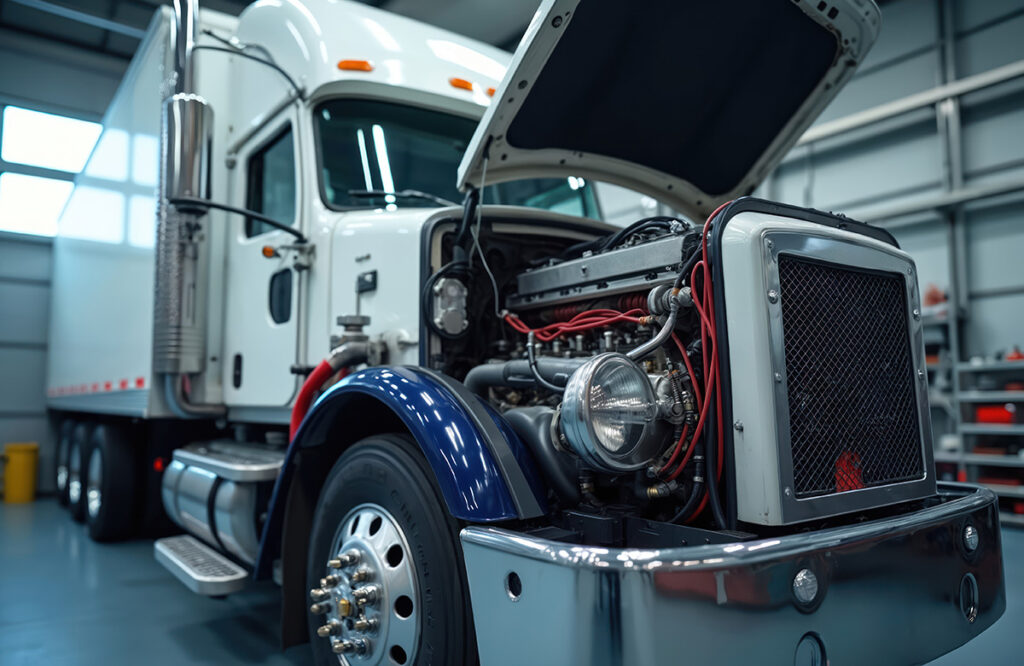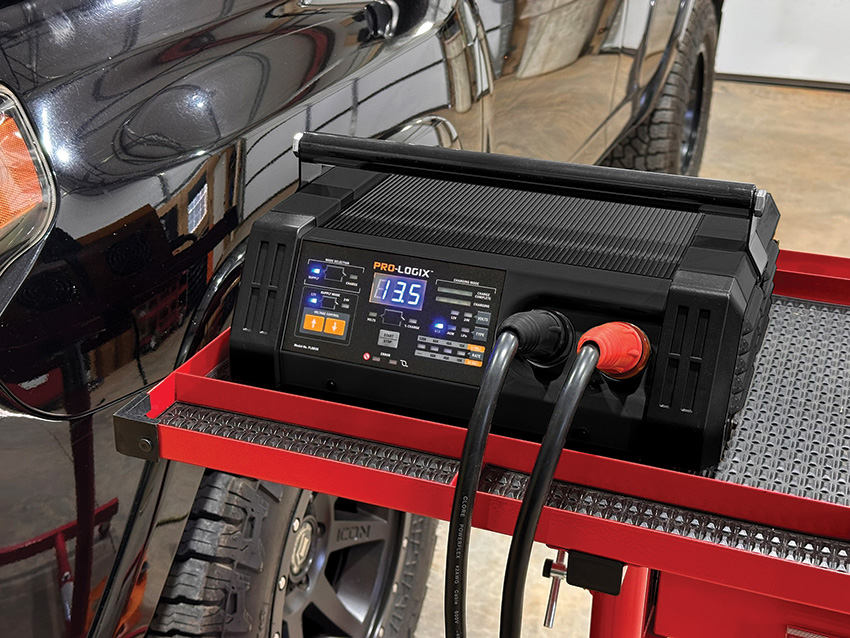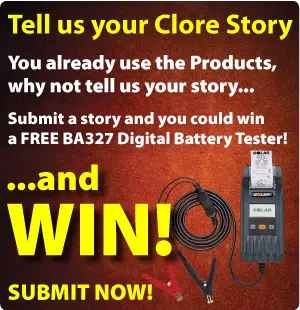We have met with dozens of fleet operators and battery manufacturers over the past 10+ years, discussing battery management and steps to be taken to avoid premature battery failure in HD vehicle applications. Usually, these discussions come about because a fleet is not getting the life expectancy from their battery packs that they anticipated and are searching for ways to improve the situation.
There are many reasons why battery packs are failing to meet expected longevity for fleet operators. These can include usage patterns, total utilization (how much is that equipment active and in use over the course of a day, a week, a month), the demands of modern vehicle electrical systems and the presence of drains caused by additional powered equipment, such as life gates, installed on a given vehicle and more. An article on TransportOperator.co.uk summed the challenge up well:
“Although engine starting currents haven’t significantly changed over the years, the recent surge in electrical demands means that conventional SLI [Starting-Lighting-Ignition] batteries are failing at a rate not seen before. This is exaggerated further when cabs double-up as hotel rooms as drivers sleep in their trucks overnight, with the battery becoming the sole source of power for cooking, heating, lighting, GPS and charging tablets or laptops etc.
Other factors – such as multiple drops that facilitate the use of the vehicle’s tail lift, which, due to key-out functions enforced by low-emission zones and laws, are powered only by the battery – also have a dramatic effect as it continues to ‘walk down’ in charge available to such a point that starting the engine is compromised.
… it is easy to see why engine starting will be a major problem. The onset of cold weather adds another challenge and heightens the risk that operators will be faced with another [service call], with the inevitable associated costs that will incur.”
So, what is a fleet operator to do to combat these factors and increase the longevity of their fleet battery packs? Likely, there are many steps that can be taken, such as ensure all “hotel” power needs are met using a separate battery bank specific dedicated to those power demands. But in this article, we’re going to focus on the benefits of preventive maintenance charging for fleet operators and the specifically challenges faced in their application.
Low State of Charge (SoC) is Bad
When it comes to almost any battery type, keeping them at or near a full SoC is beneficial for their long-term health. This is especially true of lead acid batteries, including Flooded, AGM, Spiral Wound and Deep Cycle types. Flooded and AGM batteries are especially prevalent in HD fleet vehicle battery packs. Keeping batteries and battery packs at or near a full SoC helps to slow the formation of sulfation within the battery. Sulfation is the natural deterioration of a lead acid battery over time that, as it accumulates, depletes a battery’s total energy potential, or reserve capacity, until it reaches the point where the battery can no longer accept an effective charge.
Batteries and battery packs that experience low or extremely low SoC for extended periods of time are much more susceptible to accelerated sulfation build-up, which hastens their demise. So, instead of getting four years’ worth of service from a given pack, a fleet might only get 2.5 years from that pack. This is a significant shortfall that greatly impacts ongoing costs and reduces profitability for fleets.
Preventive Charging to Combat Low SoC and Extend Pack Life
We have talked about preventive charging in many contexts. It can be a very powerful and effective way to improve battery and battery pack longevity. This is true whether we are talking about the packs found in Over-the-Road transport vehicles and other heavy equipment or the pickup truck and side-by-side in a personal garage. Regular preventive maintenance charging using a quality battery charger works. Full stop. It increases equipment uptime and extends battery life.
Plus, the effort required to institute a regular preventive charging routine is very low, so you’re getting big benefit from a low investment of time and effort. For busy fleets, the optimal approach is to integrate battery maintenance into the regular periodic maintenance routine. So, when the vehicle is in for its regular fluid service and safety check, that’s the perfect time to service the battery pack as well.
Large Battery Pack but Short Time Window – The Fleet Service Dilemma

The biggest challenge for many fleets is the fact that they often need to service large battery packs, but have only a limited time window in which to do so. Here’s a typical scenario:
- Pack consists of (4) 120Ah Group 31 AGM Batteries
- 4 * 120 = 480 total Amp Hours (Ah)
- Pack is 30% discharged, or has 70% SoC
- 480 Ah * .30 = 144 Ah needs to be replenished
Usually, the periodic fleet service window is roughly 2-2.5 hours. This is a challenge in several ways. First, 70% SoC might be generous, with many fleet vehicles coming in for service with battery packs well below this level. Second, many heavy-duty chargers available in the aftermarket would struggle to restore ~150 Ah within a 2-hour window. Many chargers start at a high advertised rate of charge, but step down to a lower rate of charge after a certain number of minutes, even commercial grade chargers. The step down to a lower rate of charge extends charging duration, making it difficult to replenish the bank in the allotted time. So, what is a fleet service operation to do?
PRO-LOGIX PL6850 – Addressing the Fleet Service Dilemma
Of course, there are many charger options when it comes to incorporating a proactive preventive charging program into your maintenance routine, but we suggest considering our new PL6850 12/24V 120A HD Battery Charger and Flashing Power Supply. It is an ideal tool to specifically address the Fleet Service Dilemma. With its ability to deliver a 120A charge rate (12V mode), it can make quick work of even the largest battery packs.
And, since the 120A charge rate isn’t restricted in any way, it can bring even heavily discharged packs back to full charge in a reasonable amount of time. When we say it isn’t restricted, we mean that, if the pack needs 6 hours of bulk charge at 120A to get to the next phase of the charging process, no problem. Under normal circumstances and assuming there are no issues with the pack, that’s what we’ll give – 120A all the way to the absorption phase. This is a critical difference between the PL6850 and many competing models. We have a 100% duty cycle even when the charger is set up to output at its highest rate of charge (again, assuming there are no underlying issues with the pack).
Plus, it provides this high rate of continuous charge in the safest manner possible. Like all PRO-LOGIX chargers, it meets the requirements of and is certified to UL1236, but our charging safety regime goes much further. We are constantly monitoring battery and/or pack health during charging to ensure that we are providing exactly what it needs. With specific charge routines for Flooded and AGM/Spiral Wound lead acid batteries, plus a charge routine for LiFePO4 lithium batteries, the PL6850 allows the operator to dial in the charge parameters that exactly meet the requirements of the battery or pack under service.
The PL6850 also offers multiple 24V charge rates (topping out at 60A), providing the versatility needed by many HD and fleet service operations, which see a wide range of vehicles with a mixed menu of electrical configurations. Its 13’ detachable and field-replaceable output cables enable easy battery connections on vehicles of all shapes and sizes, while its PowerJawTM clamps provide secure vehicle connections and efficient energy transfer to the vehicle.
It also functions as a stable power supply to maintain vehicle electrical systems in an optimal state to enable hassle-free module reprogramming. In Power Supply Mode, the PL6850 can maintain 12V systems from 13.1-14.9V and 24V systems from 26.2-29.8V, all adjustable in 0.1V increments. Power is precisely managed to create the most stable electrical environment possible, with a maximum voltage ripple of 100mV (.100V) and Rapid Load Response technology that allows the PL6850 to adjust to changes in vehicle load demand in milliseconds. Whether you’re reprogramming a squad car, a garbage truck or a Class 8 cab, the PL6850 provides the ideal electrical environment for the application.
Are you involved and HD fleet service? Do you incorporate a battery management routine in your standard maintenance program? Has it provided a clear, documented improvement in battery longevity? Does your charging process work well for you? We’d love to hear about it in the comments below






